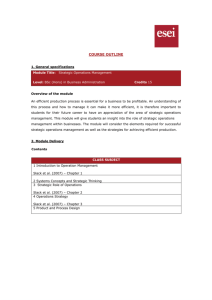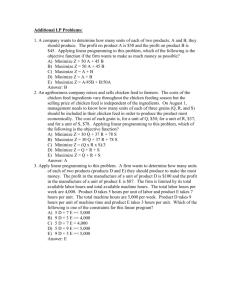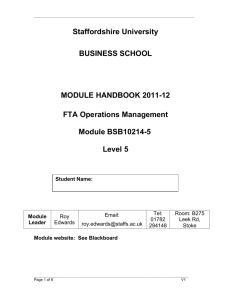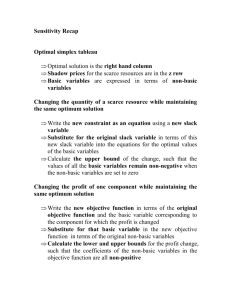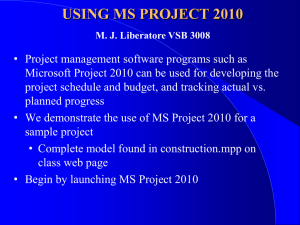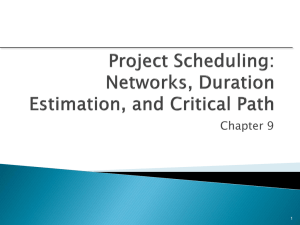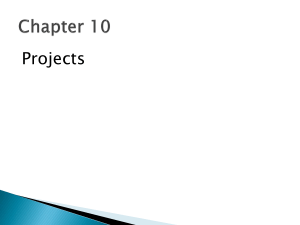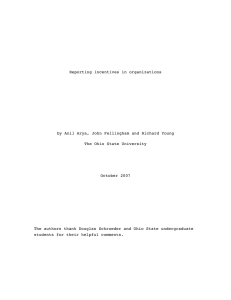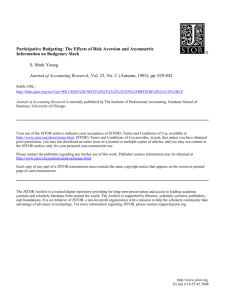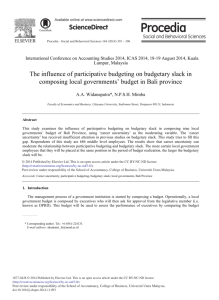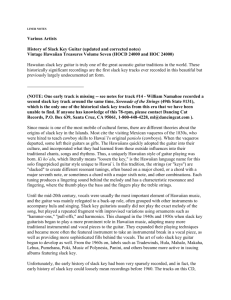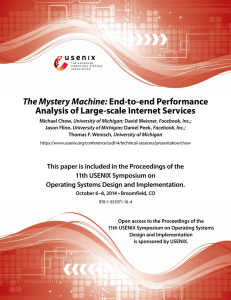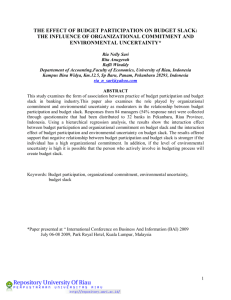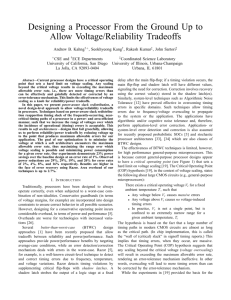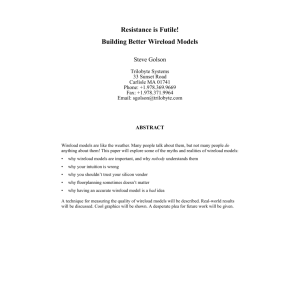Project Management by Dr. Rob Schaller
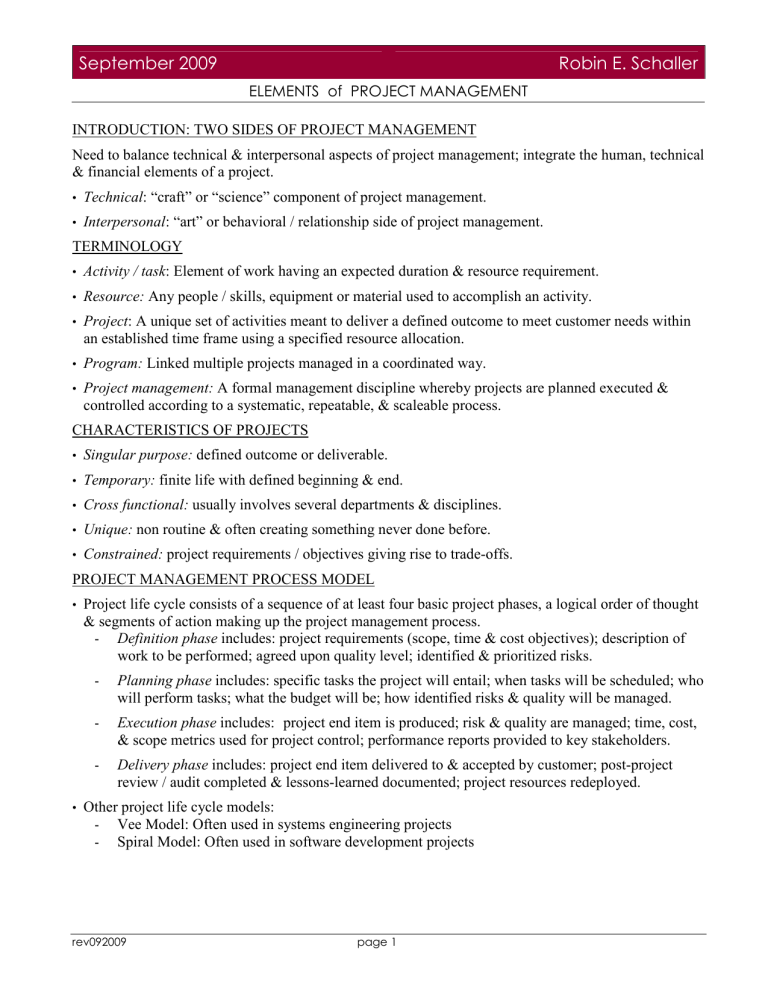
September 2009 Robin E. Schaller
ELEMENTS of PROJECT MANAGEMENT
INTRODUCTION: TWO SIDES OF PROJECT MANAGEMENT
Need to balance technical & interpersonal aspects of project management; integrate the human, technical
& financial elements of a project.
• Technical : “craft” or “science” component of project management.
• Interpersonal : “art” or behavioral / relationship side of project management.
TERMINOLOGY
• Activity / task : Element of work having an expected duration & resource requirement.
• Resource: Any people / skills, equipment or material used to accomplish an activity.
• Project : A unique set of activities meant to deliver a defined outcome to meet customer needs within an established time frame using a specified resource allocation.
• Program: Linked multiple projects managed in a coordinated way.
• Project management: A formal management discipline whereby projects are planned executed & controlled according to a systematic, repeatable, & scaleable process.
CHARACTERISTICS OF PROJECTS
• Singular purpose: defined outcome or deliverable.
• Temporary: finite life with defined beginning & end.
• Cross functional: usually involves several departments & disciplines.
• Unique: non routine & often creating something never done before.
• Constrained: project requirements / objectives giving rise to trade-offs.
PROJECT MANAGEMENT PROCESS MODEL
• Project life cycle consists of a sequence of at least four basic project phases, a logical order of thought
& segments of action making up the project management process.
- Definition phase includes: project requirements (scope, time & cost objectives); description of work to be performed; agreed upon quality level; identified & prioritized risks.
-
-
-
Planning phase includes: specific tasks the project will entail; when tasks will be scheduled; who will perform tasks; what the budget will be; how identified risks & quality will be managed.
Execution phase includes: project end item is produced; risk & quality are managed; time, cost,
& scope metrics used for project control; performance reports provided to key stakeholders.
Delivery phase includes: project end item delivered to & accepted by customer; post-project review / audit completed & lessons-learned documented; project resources redeployed.
• Other project life cycle models:
- Vee Model: Often used in systems engineering projects
- Spiral Model: Often used in software development projects rev092009 page 1
September 2009 Robin E. Schaller
ELEMENTS of PROJECT MANAGEMENT
PROJECT DEFINITION
• One does a project to obtain a result. It is important to first clearly define the desired result so “right project” is done. Therefore the first phase in project management process is to clearly establish project’s defined outcome (scope).
• Scope: defined project outcome; what is expected to be delivered when project completed.
Identifies completion criteria in specific, tangible, & measurable terms.
Sets stage for creating a project plan.
Poorly defined scope most frequently mentioned barrier to project success.
• Work Breakdown Schedule (WBS)
- System view of project: relationships between all project elements & project end item; outline of project with different levels of detail.
- Often organized by project deliverable.
- Subdivides work into smaller, more manageable components.
- Framework for Developing schedule and budget and tracking life cycle cost & time performance.
• Process Breakdown Structure (PBS)
- Process - oriented grouping of project activities defining total scope of project.
- Each descending level represents an increasingly detailed description of project work tasks.
- Often used for projects involving ill-defined deliverables.
PROJECT PLANNING
• Project plan: document describing how project’s objectives are to be achieved including a time phased budget and resource schedule.
• Task plan: set of actions arranged in sequence thought likely to achieve an objective.
• Network diagram: preferred graphic tool to arrive at the flow of project task plan having primary input of WBS and key output the project task plan.
• Initial steps
- Define activities (cost, resources & durations derived from WBS)
- Determine activity dependencies, i.e.
activity sequence providing orderly project completion and predecessor, successor, concurrent / parallel activities.
• Parallel tasks give rise to task slack and resource conflicts.
• Critical path method (CPM): a network analysis technique for defining a task plan to determine:
Critical path;
Scheduling flexibility on various paths in project network;
Minimum total project duration.
• Critical Path
Series of activities defining earliest time project can be completed;
Longest path through network diagram;
There can be more than one critical path;
Critical path can change as project progresses;
Knowing critical path allows project manager to proactively manage schedule. rev092009 page 2
September 2009 Robin E. Schaller
ELEMENTS of PROJECT MANAGEMENT
• Project slack: Amount of time an activity can be delayed before it becomes critical.
• Categories of slack
- Total slack: will not affect planned project finish date. With total slack, managers of following activities need to be notified their activity start will be delayed.
-
Free slack: will not delay early start of any immediately following tasks. With free slack, coordination with other activity managers unnecessary.
• Project management and slack
- Slack represents flexibility to rearrange work & resources throughout project life cycle.
- Absence of slack represents increased risk of not completing project on time.
- The less slack available the more closely a project must be monitored.
• Resource responsibility matrix
- Used where project size & scope may not warrant elaborate WBS or OBS.
- Sometimes called linear responsibility chart or responsibility assignment matrix.
- Provides means for all project participants to view their assignments.
-
Also useful for organizing & assigning responsibilities for subprojects of large complex projects.
MANAGING REQUIREMENTS: THE TRIPLE CONSTRAINT
• Balancing project’s constraints:
- Scope;
- Cost;
- Time.
• Managing involves making trade-offs among them.
HUMAN SIDE OF PROJECT MANAGEMENT
• Although technical aspects of project management are important, interpersonal issues often demand the most attention.
• Dealing with the human element is vital to project success.
• Project manager builds & maintains network of cooperative relationships among stakeholders.
• Stakeholder categories:
- Core team: directly assigned to project.
- Extended team : within & outside enterprise who are directly or indirectly involved.
• Engineering project teams:
- Most technical problems beyond reach of single individual to solve.
- Successful engineer must be comfortable in this highly interpersonal environment, and to advance, needs to excel in it.
-
-
-
Temporary in duration with specific focus.
Usually highly diverse with both core & affiliated members.
Examples of engineering project teams: improvement teams, problem-solving teams and product development teams. rev092009 page 3
September 2009 Robin E. Schaller
ELEMENTS of PROJECT MANAGEMENT
• Leadership:
- Ability to positively influence people to achieve results & have a meaningful impact.
- Positive influence depends on trust : we are more likely to take at face value the actions & intentions of those we trust.
• Being trustworthy entails two qualities:
- Competence: skills - the ability to make things happen when it really counts. This includes the following skills:
-
-
-
Interpersonal;
Organizational;
Task / technical.
- Character: motives - personal values & principles; this includes the following traits:
- Openness;
- Sense of purpose;
- Consistency / Integrity. rev092009 page 4



